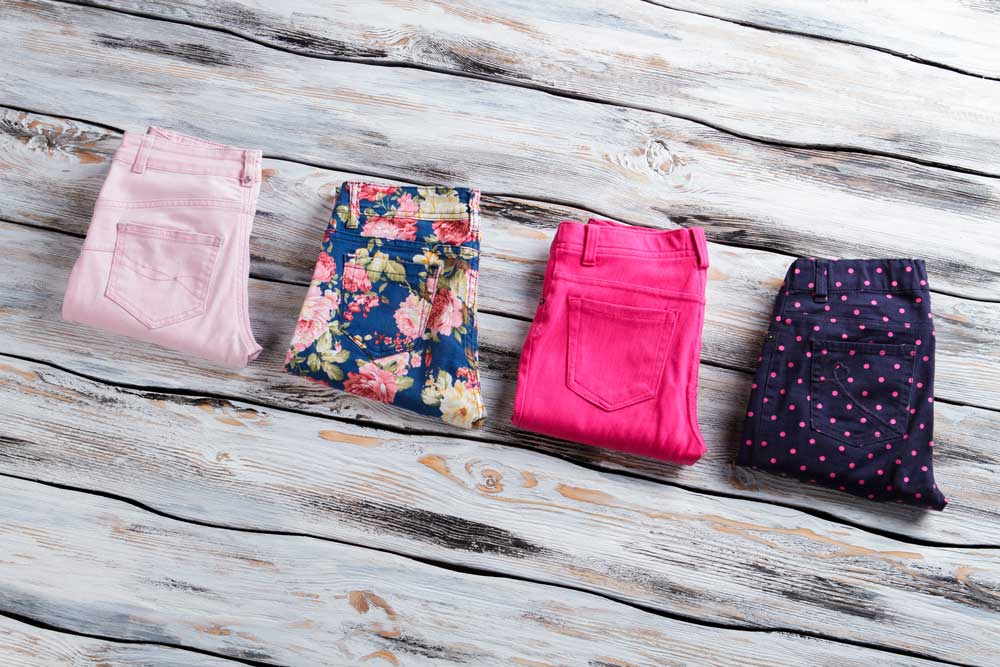‘Who wears the pants here?’ - a seemingly innocuous fashion idiom that’s all about control and decision-making in a household or relationship. Over time, pants – or trousers as they’re called in the UK – have come to be associated with more than just a style choice. They’re an indication of power and authority. But women didn’t always wear pants, or own the power.
Here’s a fun fact: in February 2013, the French Government overturned a 200-year-old ban on women in trousers. The law had been imposed in November 1800 and women needed to get permission from local authorities to ‘dress like a man’. Of course, people had ignored the dictat for decades, but it was still there – a legal blot on the books. The irony is that one of France’s national heroines, Joan of Arc was tried by England for the same reason; wearing men’s clothes or pants.
We take it for granted now that pants are acceptable, and even desirable clothing for women. But until the mid-19th century, women weren’t allowed to wear pants, except as part of their undergarments. It was considered sacrilege, and women could even be arrested and jailed for it. However, some European and American women on vacation noticed that Turkish women wore loose pants all the time, which seemed more relaxed and appealing than the tight-laced corsets and voluminous skirts they were expected to slap on.
One of the early innovators to attempt a change was the American Elizabeth Smith Miller. In 1851, she designed the first pair of ‘bloomers’, named after women’s rights activist Amelia Bloomer – who would later popularise the garment. She designed a loose pair of Turkish pants that gathered at the ankles and was worn underneath a short skirt.
Unfortunately, Victorian society rejected the idea of these women’s trousers, calling them immodest and even heathen. Trousers resurfaced briefly during the Civil War in America when women wore them on the battlefield while tending to injured soldiers, but they disappeared just as quickly.
In the early 1900s, women started wearing trousers, but only for athletic pursuits such as tennis. And then World War I broke out. It necessitated women to fill men’s roles in the industry, and some of them took to wearing trousers, with factory workers even wearing overalls.
Earlier, circa 1913, French designer Paul Poiret had created harem pants, inspired by costumes from the Arabian Nights. These were met with mixed feelings. Towards the end of WWI, designer Coco Chanel created a pair of wide, flared trousers for herself, attempting to make women’s fashion more comfortable, while being elegant. These were inspired by sailor pants, and so she dubbed them ‘yachting pants’. These were all the rage in the 1920s, popularising the androgynous fashions that France would soon become a forerunner in.

Early Hollywood icons like Marlene Dietrich and Katherine Hepburn widely propagated the use of trousers in their wardrobes. Although they were mildly criticised for being ‘masculine’ and ‘manly’, the world watched in fascination as they glamourised pants both onscreen and offscreen.
It wasn’t until the 1960s when the feminist movement took off, that women’s pants finally gained mainstream acceptability. The emergence of jeans helped as well. Women entering the workforce in the 1980s and 90s brought the pantsuit culture into vogue. Today, of course, a plethora of options abound for women’s pants.
On the other hand, pants were not a new concept in Asian Culture. Women in Central Asia – particularly Persia - had worn them for centuries. In fact, the global movement for women’s pants originally took inspiration from the Ottoman Empire, where both men and women wore similar, unisex clothing, partaking in similar activities as well, such as horseback riding. This was called a salwar, and its use spread through many Asian cultures in the Middle Ages, including India, Pakistan and Afghanistan.
There’s no denying that the salwar is the perfect trouser variant, favoured by many Indian women as it marries comfort, style, and tradition. However, the urban woman has undoubtedly broadened her horizons to accommodate various pant styles in her wardrobe from around the world. Fashion forecaster Neerja K Singh tells us what to watch out for in 2025:
- The ‘big-shirt-little-pants’ look, or shorts with an oversized blazer or top, continues to be a favourite.
- Suede pants in earthy, natural tones will be extremely popular, so add a pair to your collection.
- Expect extra nostalgia, with high-waisted, pleated wide-leg pants. High-waisted culottes and capris will also find favour this season.
- Pantsuits with drama will rule the corporate world. Look for those with subtle embellishments – a little ruffle here, a touch of embroidery there.
- The emphasis is always on comfort, and what suits your body type. So regardless of what pants are in vogue, consider that they satisfy the basic parameters of fit and comfort.